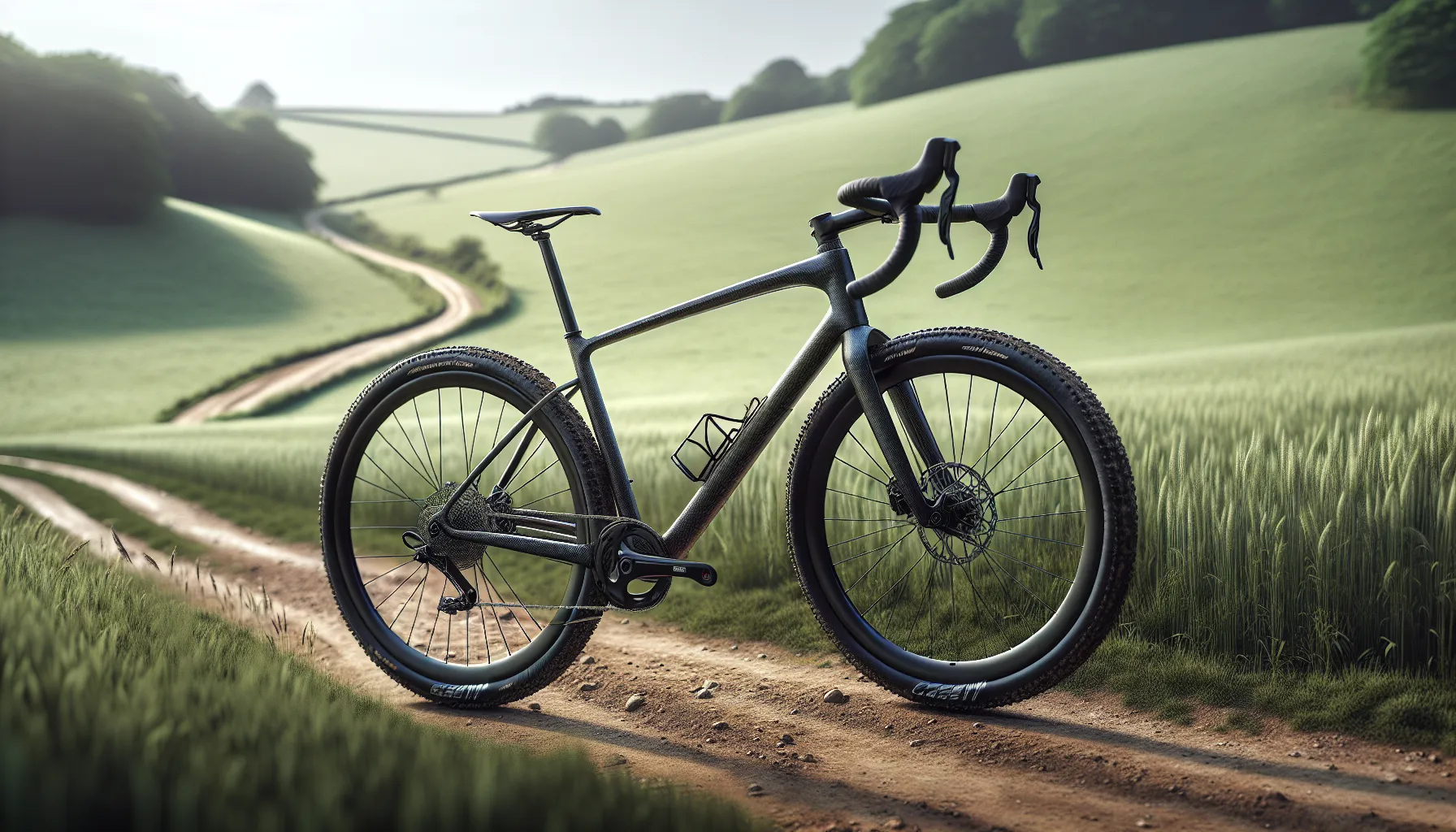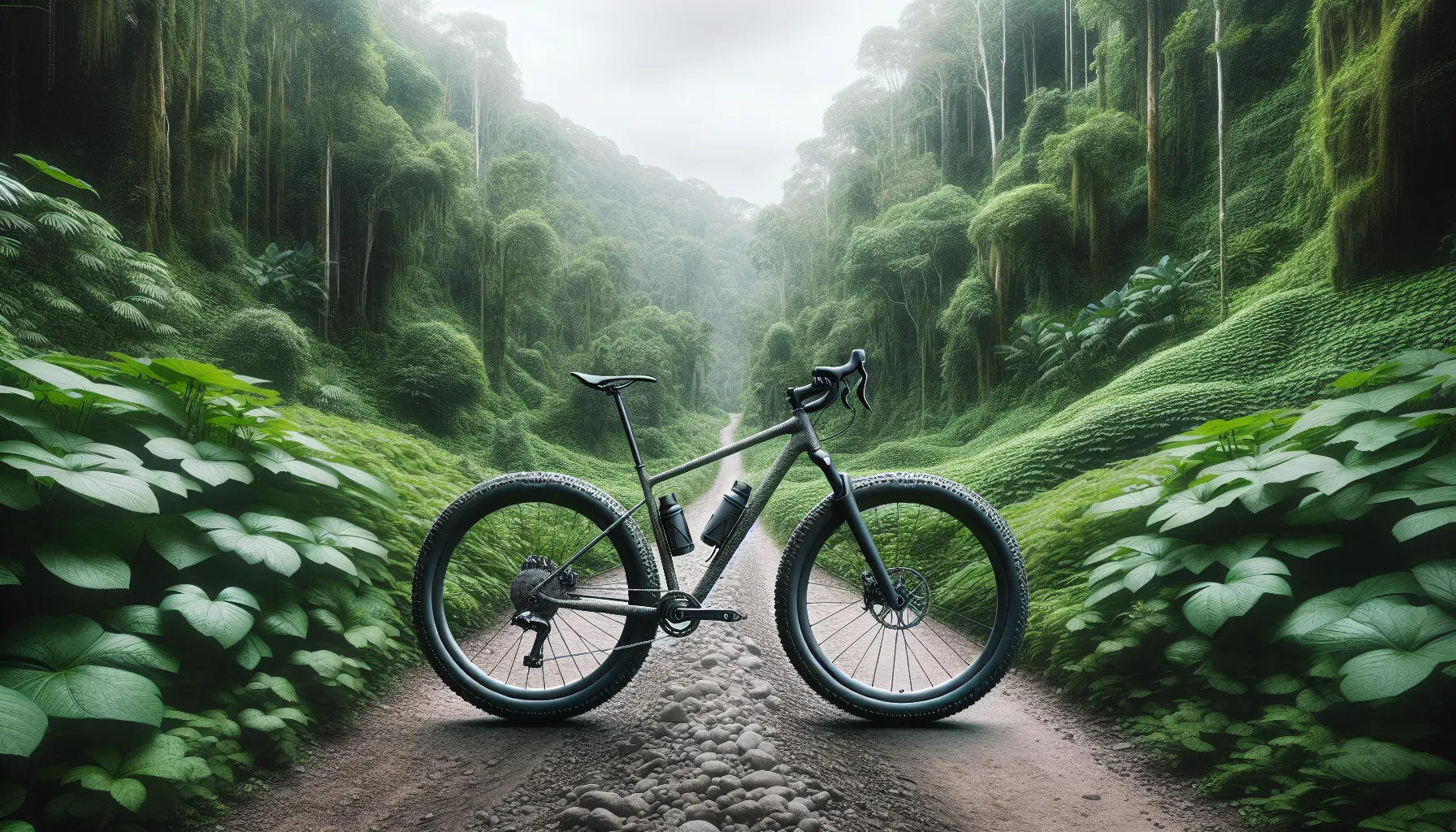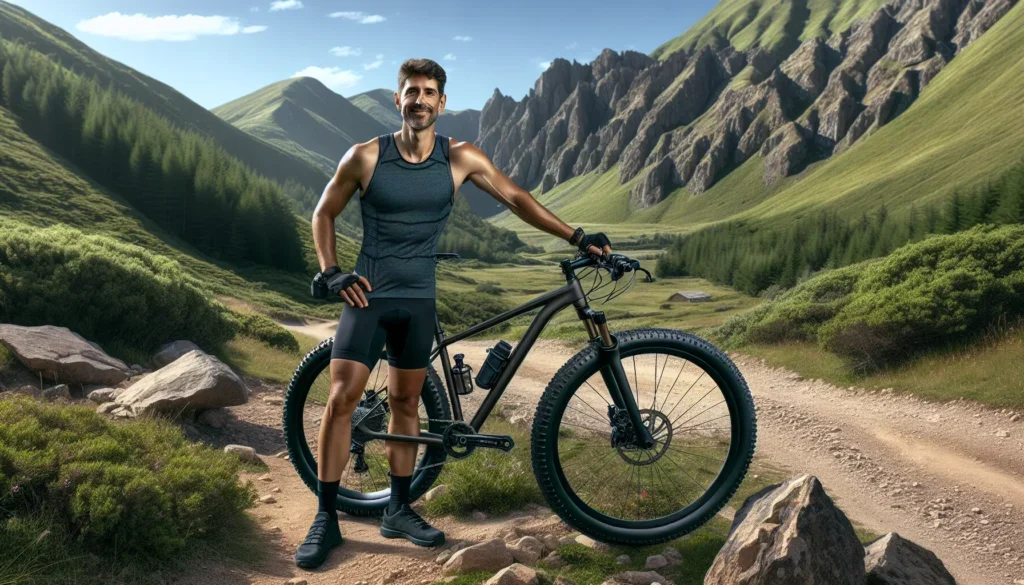What Is a Gravel Bike? The Ultimate Guide to Versatile and Adventure-Ready Cycling
Key Takeaways
- Gravel bikes are highly versatile and designed for mixed terrains, making them suitable for gravel paths, paved roads, and dirt trails.
- Key features include wider tires (38mm–50mm) for better traction, disc brakes for reliable stopping power, and relaxed geometry for stability and comfort.
- Gravel bikes offer unmatched adaptability, perfect for commuting, bikepacking, long-distance rides, or recreational adventures.
- They combine traits from road, mountain, and cyclocross bikes, offering a balanced blend of speed, durability, and off-road capability.
- Ideal for both beginners and seasoned cyclists, gravel bikes deliver comfort, performance, and the ability to explore diverse terrains effortlessly.
- Compared to road and mountain bikes, gravel bikes excel by providing comfort, gear-mounting options, and a smoother transition across varied surfaces.
I’ve always loved the thrill of cycling, but there’s something magical about exploring paths less traveled. That’s where gravel bikes come into play. If you’ve ever wondered what makes these bikes so special, you’re not alone—they’re becoming a favorite for adventurers who crave versatility and freedom on two wheels.
Gravel bikes are like the Swiss Army knife of bicycles. They’re built to handle smooth pavement, rugged trails, and everything in between. Whether you’re tackling a long-distance ride or just want to mix up your daily route, these bikes offer a perfect blend of comfort, durability, and performance.
What Is A Gravel Bike?
A gravel bike is a multi-purpose bicycle designed for riding on mixed terrains, including gravel, dirt paths, and paved roads. It combines features from road bikes, mountain bikes, and cyclocross bikes to create a hybrid suitable for diverse cycling experiences. The frame typically has a relaxed geometry for improved stability and comfort during long rides.
Gravel bikes stand out with wider tires, usually ranging from 38mm to 50mm, which offer better traction and cushioning on uneven surfaces. They also feature disc brakes for reliable stopping power in all conditions, whether it’s dry or muddy terrain. These bikes often include multiple mounting points for gear, making them ideal for bikepacking and extended tours.
While lightweight materials like aluminum and carbon fiber are common, steel gravel bikes remain popular for their durability. Mixed-terrain-friendly drivetrains, like 1X or 2X systems, provide efficient gearing for climbing steep hills or cruising on flat roads. This versatility makes gravel bikes suitable for adventures, commutes, or recreational rides.
Key Features Of A Gravel Bike

Gravel bikes come with distinct features designed to handle diverse terrains while ensuring comfort and performance. Each component is tailored for versatility and durability, making them a favorite for adventurers like me.
Frame Design
Gravel bike frames prioritize stability and comfort with a relaxed geometry. The longer wheelbase enhances control on rough terrain, while the sloping top tube provides additional clearance. Lightweight materials like carbon fiber and aluminum reduce weight for efficiency, though steel options remain popular for their strength and smooth ride.
Tire Width And Grip
Wider tires, ranging from 38mm to 50mm, improve traction and absorb shocks on mixed terrains. Knobby or semi-slick patterns help maintain control on loose surfaces like gravel or dirt. Tubeless setups are common, reducing the risk of punctures and allowing for lower pressure to enhance grip.
Handlebars And Riding Position
Flared drop handlebars offer multiple hand positions, improving comfort during long rides. The wide stance enhances control during descents or rough sections. These handlebars also create a more relaxed riding posture compared to traditional road bikes, reducing strain on the back and shoulders.
Gearing And Brakes
Gravel bikes typically feature wide-range gearing for steep climbs and fast flats. Many use 1x or 2x drivetrains to balance simplicity and range. Disc brakes, either mechanical or hydraulic, deliver consistent stopping power in all conditions, from wet trails to dry asphalt. Their reliability makes me confident on unpredictable routes.
Benefits Of A Gravel Bike

Gravel bikes offer a range of advantages, making them an excellent choice for cyclists seeking adaptability and comfort. Their unique design caters to both adventure and practicality.
Versatility
Gravel bikes excel in versatility, accommodating diverse activities. I can use mine for commuting, bikepacking, or recreation. With mounting points for racks and bags, it’s easy to carry gear on extended trips. The drivetrain supports mixed terrains, smoothly transitioning between paved roads and rough trails. This multi-purpose capability makes gravel bikes suitable for a variety of cycling needs.
Comfort On Long Rides
Comfort defines the gravel bike experience. A relaxed frame geometry aids stability and reduces strain during lengthy rides. The wider tires (38mm–50mm) absorb shocks, minimizing discomfort on uneven surfaces. Flared drop handlebars offer multiple grip positions for reduced hand fatigue, ensuring I stay comfortable regardless of the distance.
Accessibility To Various Terrains
Gravel bikes handle a wide range of terrains with ease. The tires provide excellent grip on gravel, dirt, and tarmac. Disc brakes deliver dependable stopping power, even in wet or muddy conditions. Whether climbing steep trails or navigating city streets, my bike’s design guarantees consistent performance.
Gravel Bike Vs. Other Bicycle Types

Gravel bikes stand out for their ability to handle diverse terrains while offering comfort and flexibility. Here’s how they compare to road and mountain bikes.
Gravel Bike Vs. Road Bike
Gravel bikes provide more versatility than road bikes. While road bikes are designed for speed on smooth, paved surfaces, gravel bikes handle a mix of terrain, including gravel paths and dirt trails. Gravel bikes feature wider tires, typically between 38mm to 50mm, offering better traction and cushioning compared to the narrow tires on road bikes, which usually range from 23mm to 32mm.
Gravel bikes also prioritize comfort with a more relaxed frame geometry and flared drop handlebars, making them suitable for lengthy rides on varied textures. In contrast, road bikes focus on an aggressive riding position to enhance aerodynamics and speed. Additionally, gravel bikes often include mounting points for gear racks or bags, making them ideal for bikepacking or commuting, unlike road bikes, which emphasize a minimalist setup.
Gravel Bike Vs. Mountain Bike
Gravel bikes differ from mountain bikes in their design and functionality. Gravel bikes perform better on mixed surfaces, combining the efficiency of road bikes with off-road capability, while mountain bikes excel in technical, rugged trails with steep descents and sharp turns. The tires on gravel bikes, though wider than road tires, are narrower than those on mountain bikes, which often exceed 2.25 inches for superior grip and shock absorption.
Mountain bikes feature suspension systems, such as front or dual suspension, to handle uneven terrain, whereas most gravel bikes rely on a rigid frame to reduce weight and improve pedaling efficiency across longer distances. Gravel bikes also include more straightforward drivetrains and components, focusing on adaptability across conditions, while mountain bikes come equipped with wider gear ranges and dropper posts for extreme off-road challenges. For riders needing a balance of road performance and off-road capability, gravel bikes offer unmatched versatility.
Is A Gravel Bike Right For You?
A gravel bike fits those who value versatility and comfort when exploring diverse terrains. If you ride on a mix of pavement, dirt roads, and trails, this bike provides a convenient solution without switching between specialized models. Its adaptability makes it perfect for both recreational and practical cycling needs.
Choose a gravel bike if you enjoy long-distance rides or bikepacking adventures. With frame-mounted storage options, reliable disc brakes, and wide tires for stability, it handles gear and rougher conditions seamlessly. These features make it a strong choice for multi-day trips or off-grid explorations.
Consider this bike if you’re looking for an ideal commuting option. Gravel bikes feel efficient on paved roads yet maintain control on unpaved paths. With relaxed geometry and flared handlebars, they offer comfort for daily rides or longer trips.
Opt for a gravel bike if you appreciate simplicity but demand performance across diverse conditions. Its wide-range gearing, durable construction, and ability to tackle steep climbs and loose surfaces ensure confidence during all types of rides. This bike suits riders prioritizing both practicality and adventure.
Conclusion
Gravel bikes truly stand out as the ultimate do-it-all option for cyclists who crave adventure and versatility. Whether you’re tackling rugged trails, cruising through city streets, or embarking on a multi-day bikepacking trip, these bikes are ready for it all. Their thoughtful design and practical features make every ride enjoyable and reliable, no matter the terrain.
If you’re looking for a bike that blends comfort, durability, and adaptability, a gravel bike might just be your perfect match. It’s a bike that encourages exploration and opens up endless possibilities for where your wheels can take you.
Frequently Asked Questions
What is a gravel bike?
A gravel bike is a versatile bicycle designed for mixed terrains, combining features of road, mountain, and cyclocross bikes. It typically has a relaxed frame geometry for comfort, wider tires for better traction, disc brakes for reliable stopping power, and multiple mounting points for gear, making it suitable for road cycling, trails, or bikepacking adventures.
What makes gravel bikes different from road bikes?
Gravel bikes differ from road bikes in their wider tires, relaxed frame geometry, and versatility. While road bikes excel on smooth surfaces with speed-focused designs, gravel bikes offer more comfort, grip, and adaptability, making them better suited for mixed terrains like dirt roads and trails.
Can I commute using a gravel bike?
Yes, gravel bikes are excellent for commuting. Their wider tires and comfortable geometry make them suitable for both paved and unpaved paths. Additionally, features like disc brakes and gear mounting points add practicality for daily commutes or carrying goods.
What types of terrain can a gravel bike handle?
A gravel bike can handle various terrains, including smooth roads, gravel paths, dirt trails, and rugged off-road surfaces. Its adaptability stems from wide tires, reliable braking, and a stable frame design, making it ideal for mixed-surface cycling adventures.
Are gravel bikes good for long-distance rides?
Yes, gravel bikes are great for long-distance rides. Their relaxed geometry, wider tires, and comfortable design help reduce fatigue over time, while their durable construction lets riders confidently navigate different terrains for extended periods.
How do gravel bikes compare to mountain bikes?
Gravel bikes are designed for efficiency on mixed terrains, balancing road-speed capabilities with off-road performance. Mountain bikes, on the other hand, are built for technical trails and challenging off-road conditions, with features like suspension systems and more aggressive tires.
What are the key features of a gravel bike?
Key features of gravel bikes include a relaxed frame geometry for stability, wide tires (38mm–50mm) for traction and shock absorption, disc brakes for reliable stopping power, flared drop handlebars for control, and frame mounts for storage, making them perfect for varied terrains.
Can a gravel bike be used for bikepacking?
Yes, gravel bikes are ideal for bikepacking. Their durable construction, multiple mounting points for gear, wider tires for comfort, and reliable braking systems make them suited for carrying heavy loads over long distances on diverse terrains.
Are gravel bikes beginner-friendly?
Gravel bikes are highly beginner-friendly due to their comfortable design and versatility. Their relaxed geometry and wide tires provide confidence and stability on different surfaces, making them a great choice for new riders interested in exploring various terrains.
Is a gravel bike worth the investment?
A gravel bike is worth the investment if you value versatility, comfort, and adaptability. Ideal for commuting, recreation, or off-road adventures, its durability and multi-purpose features make it an excellent choice for cyclists seeking performance across diverse riding conditions.




